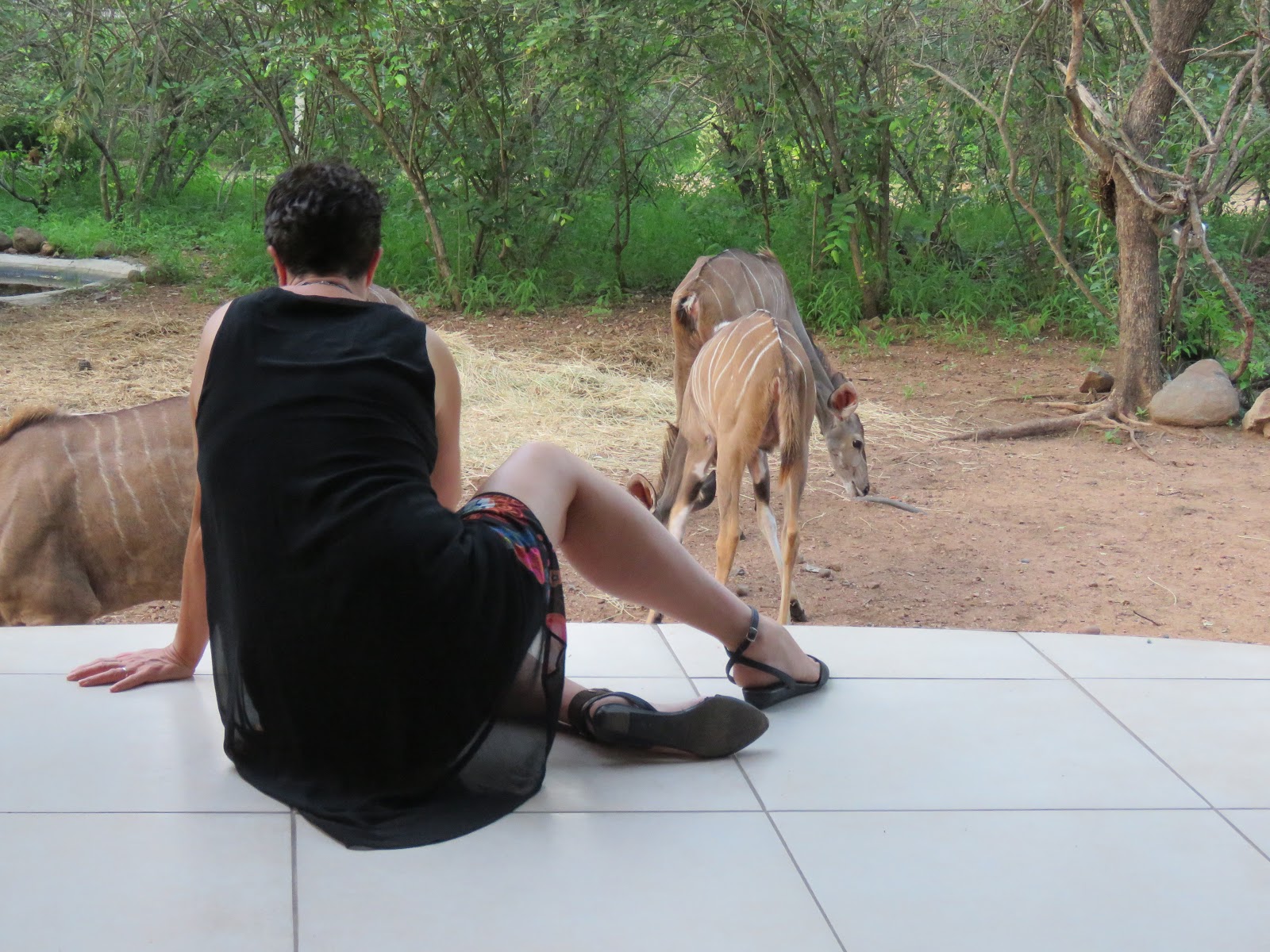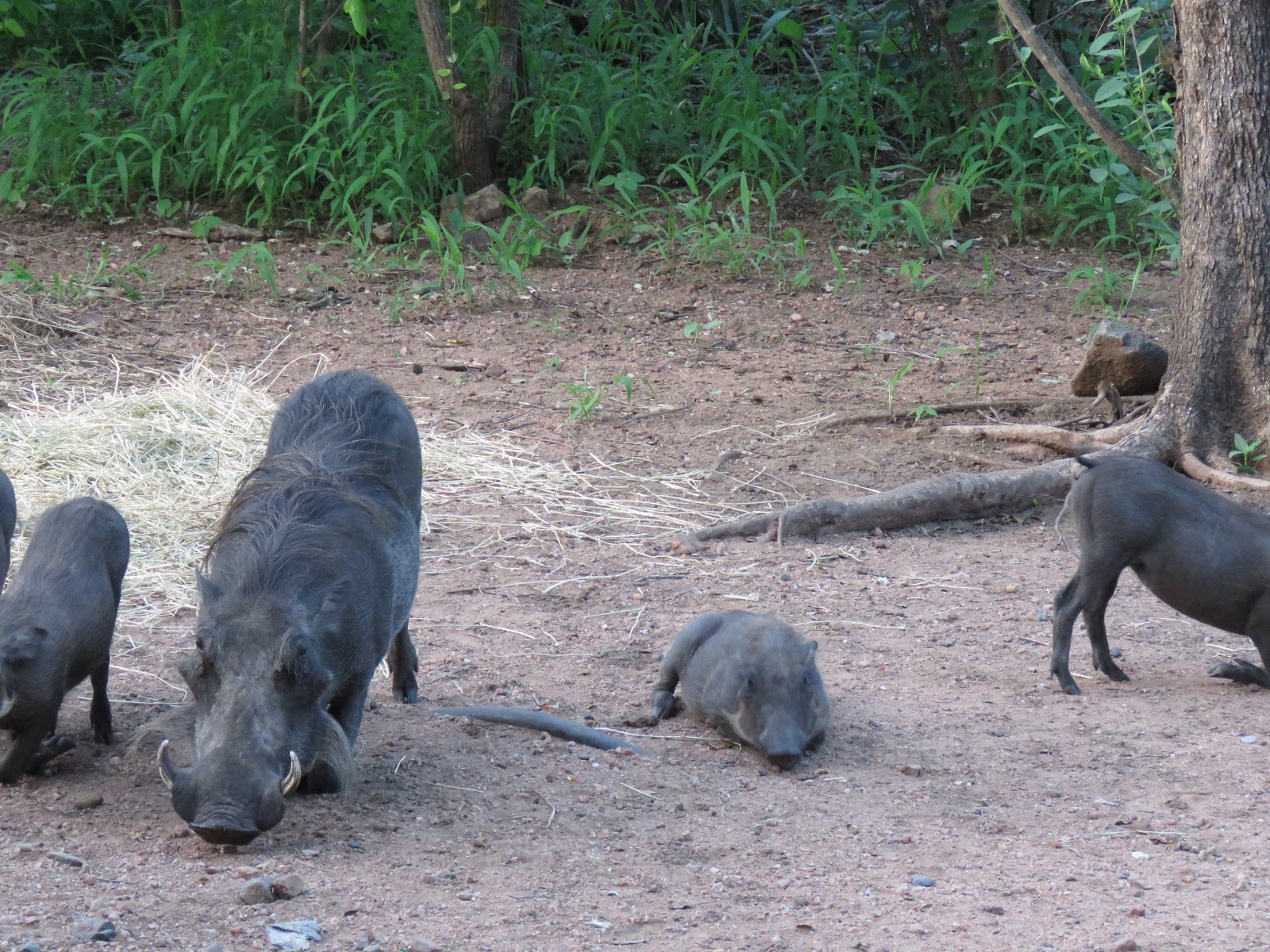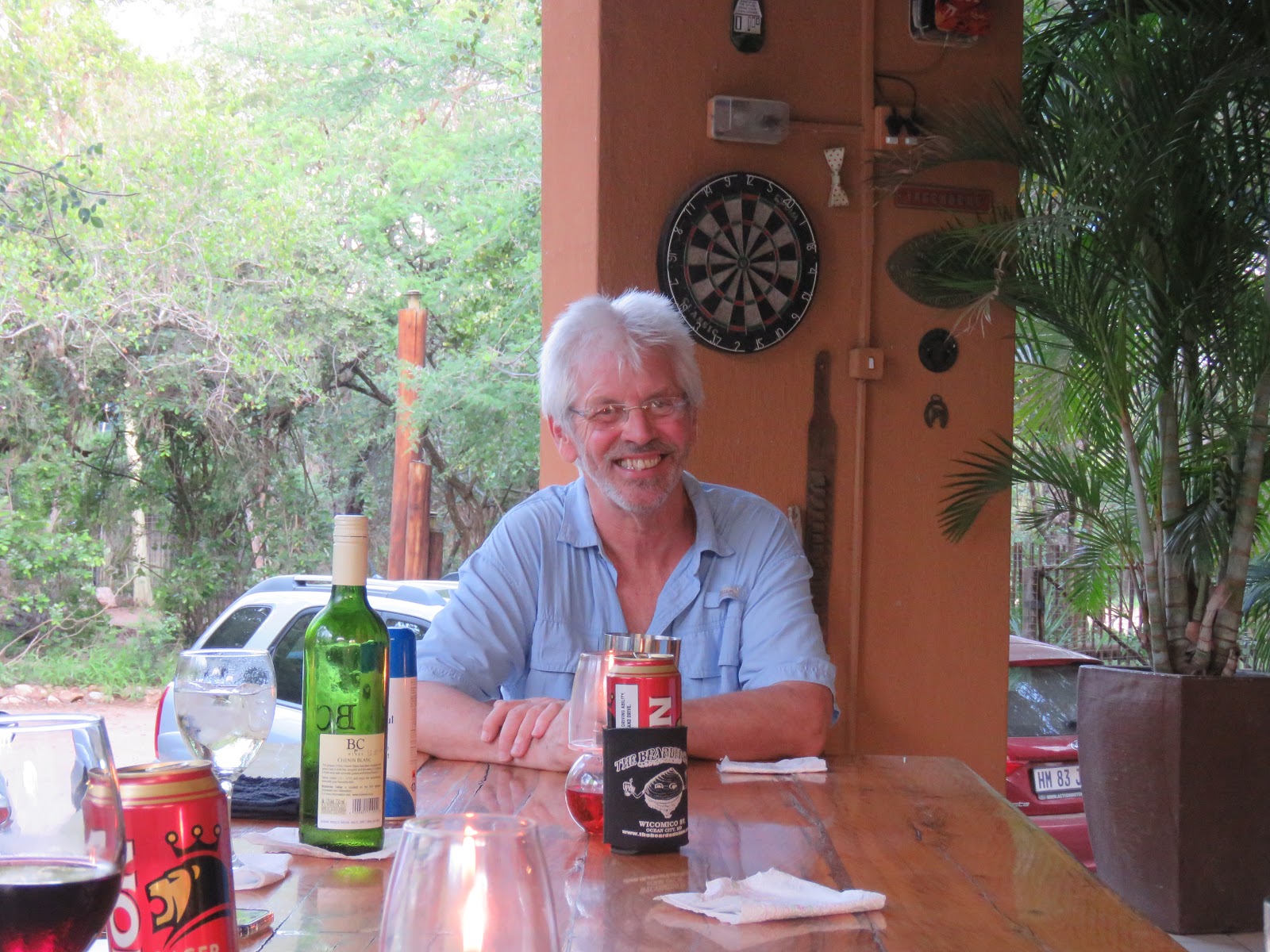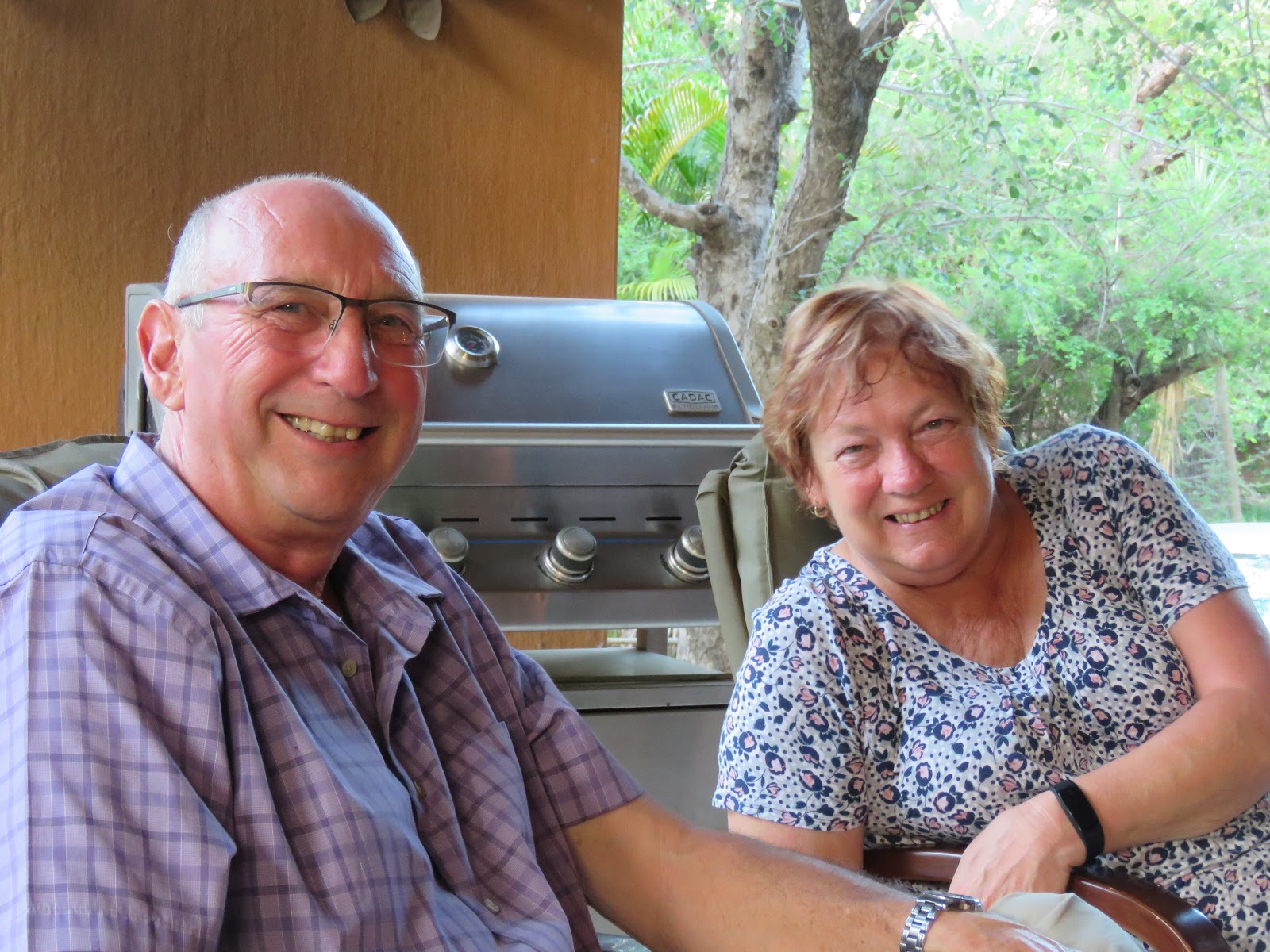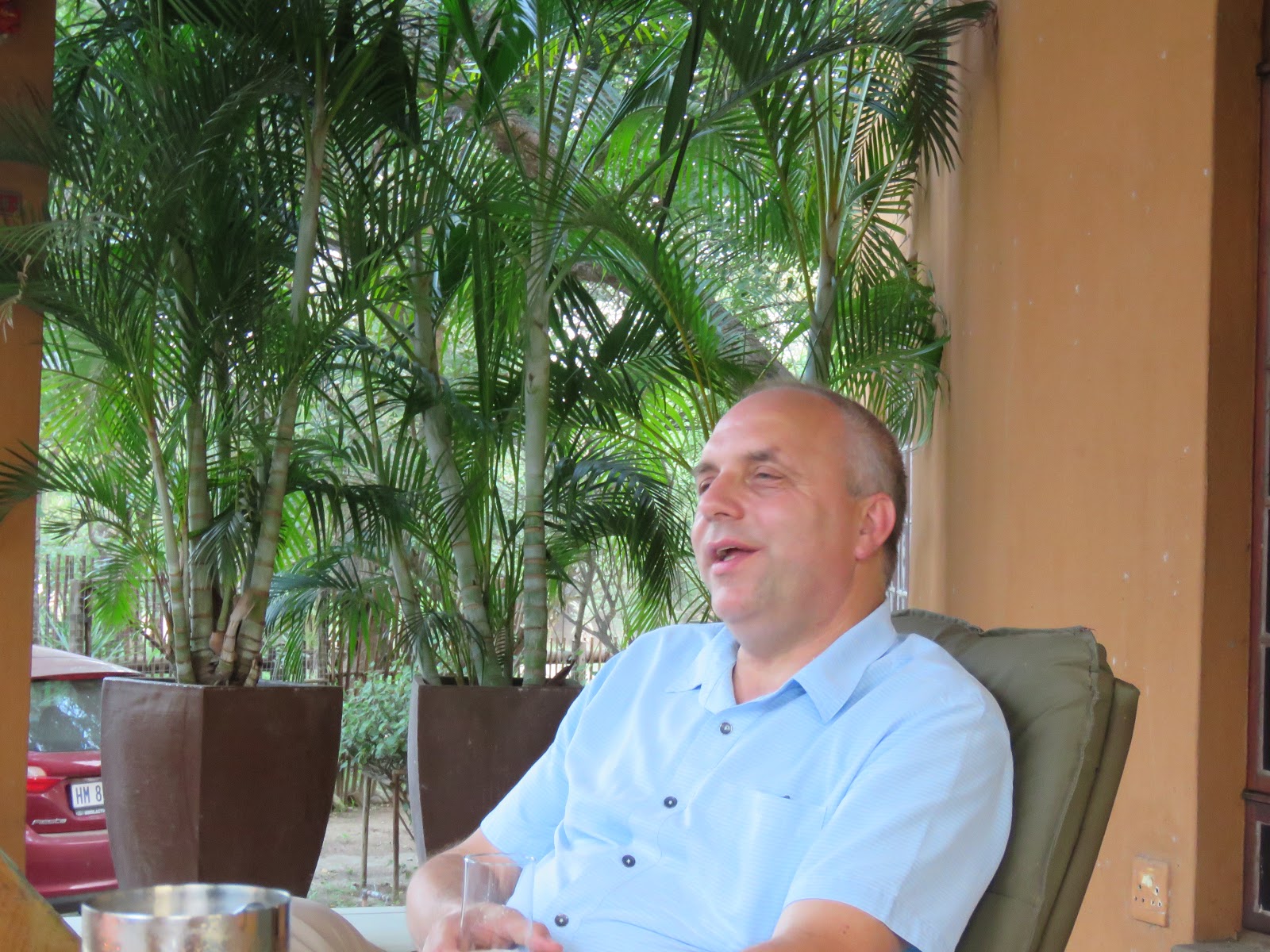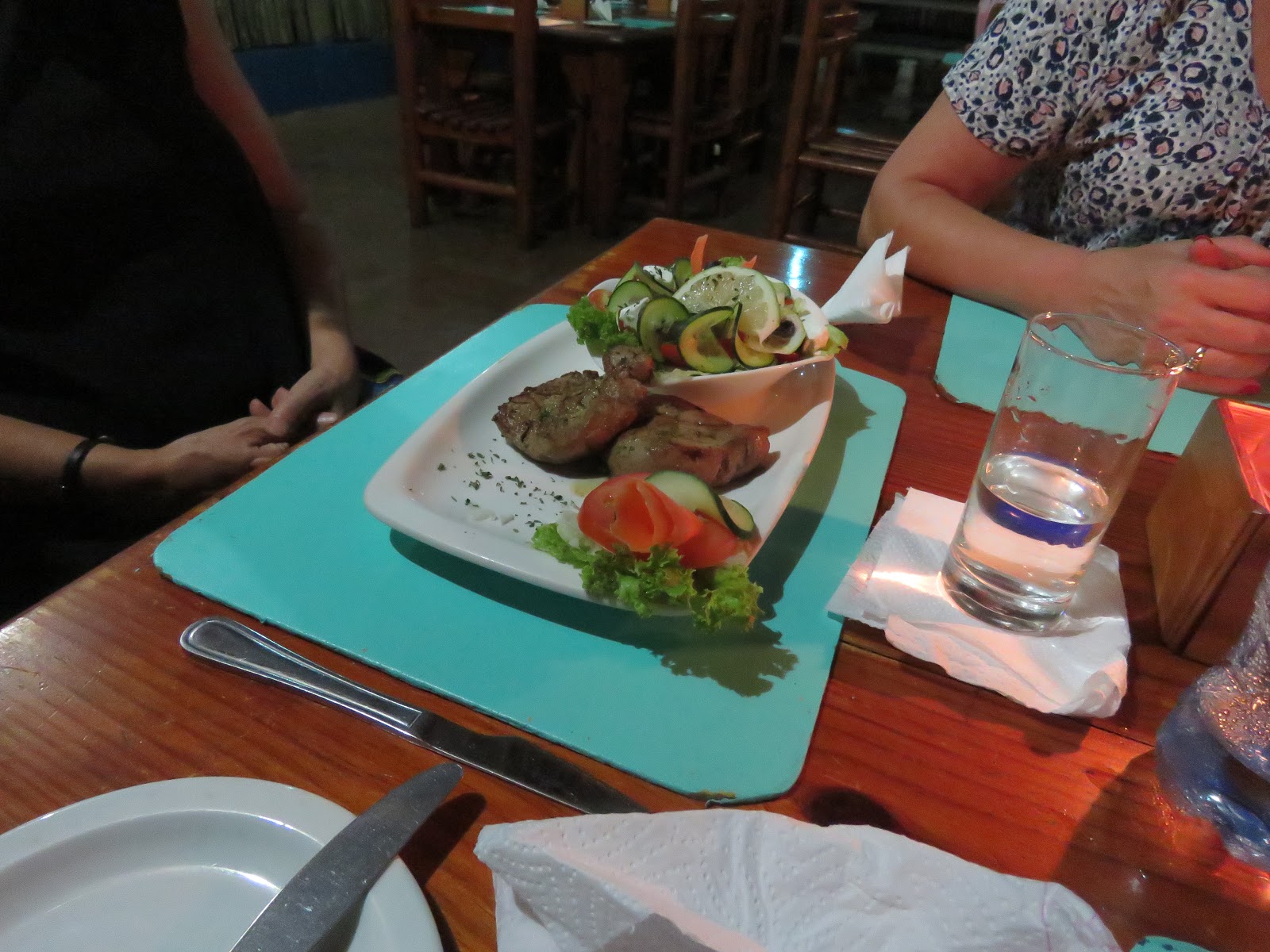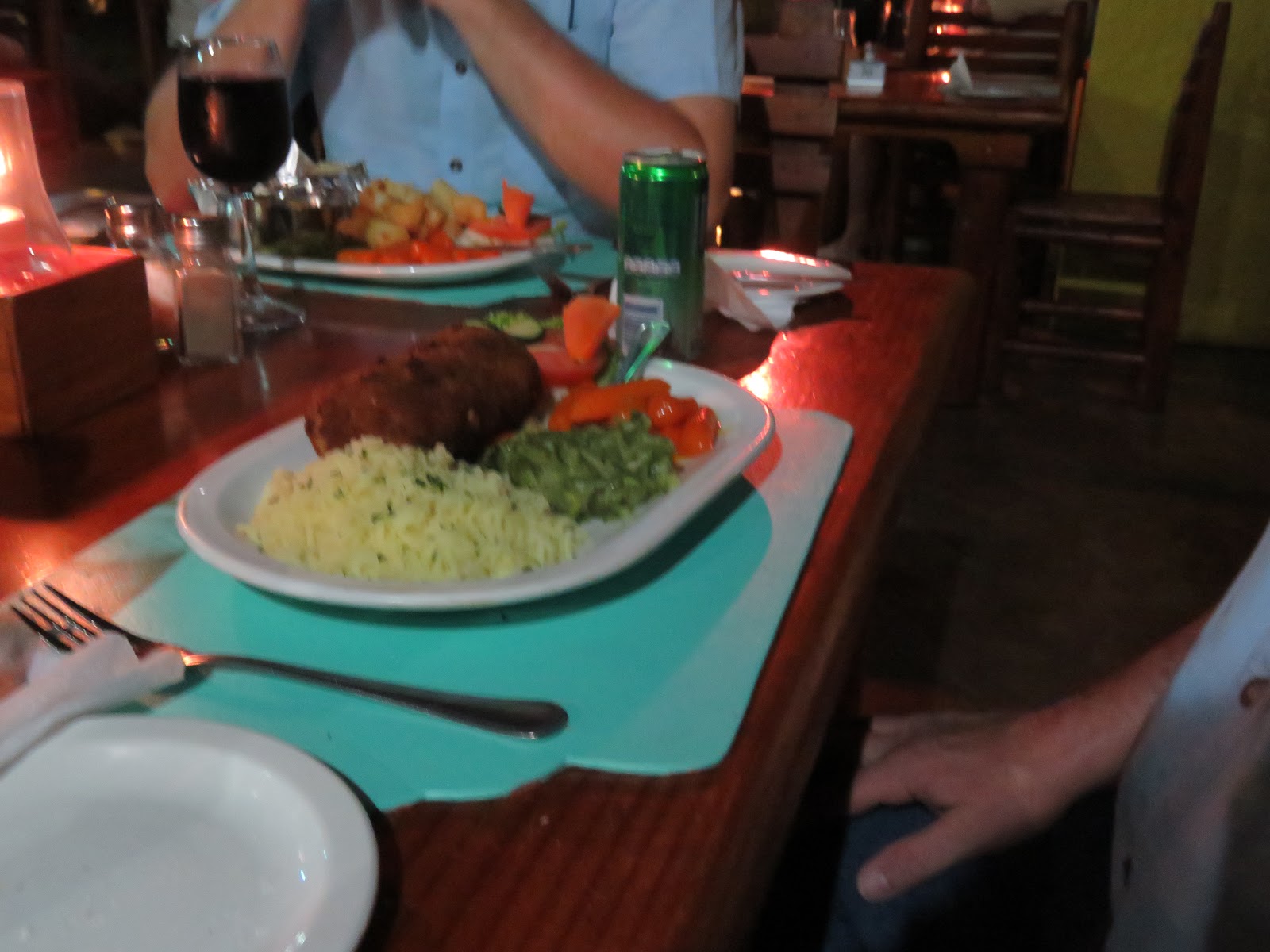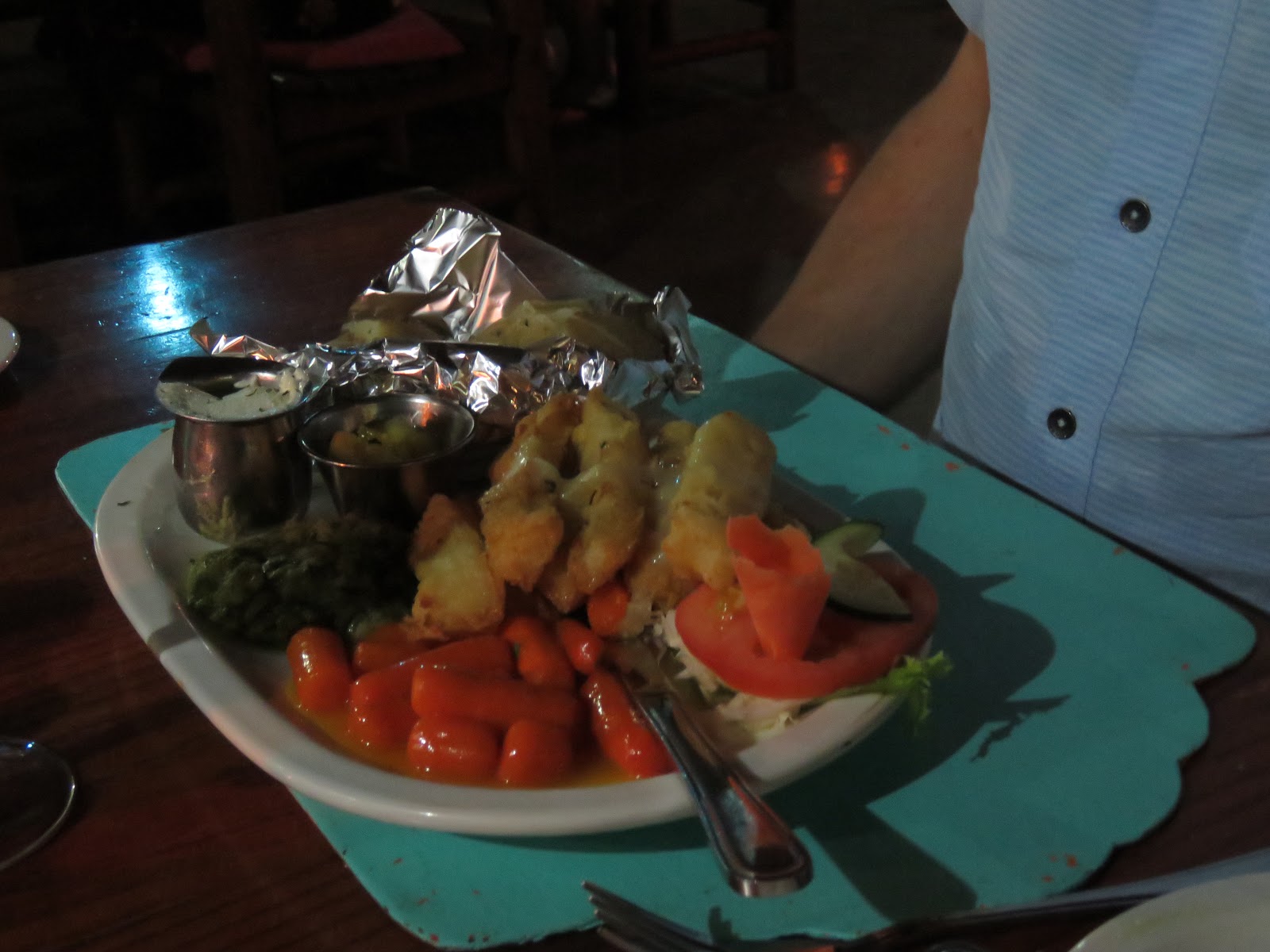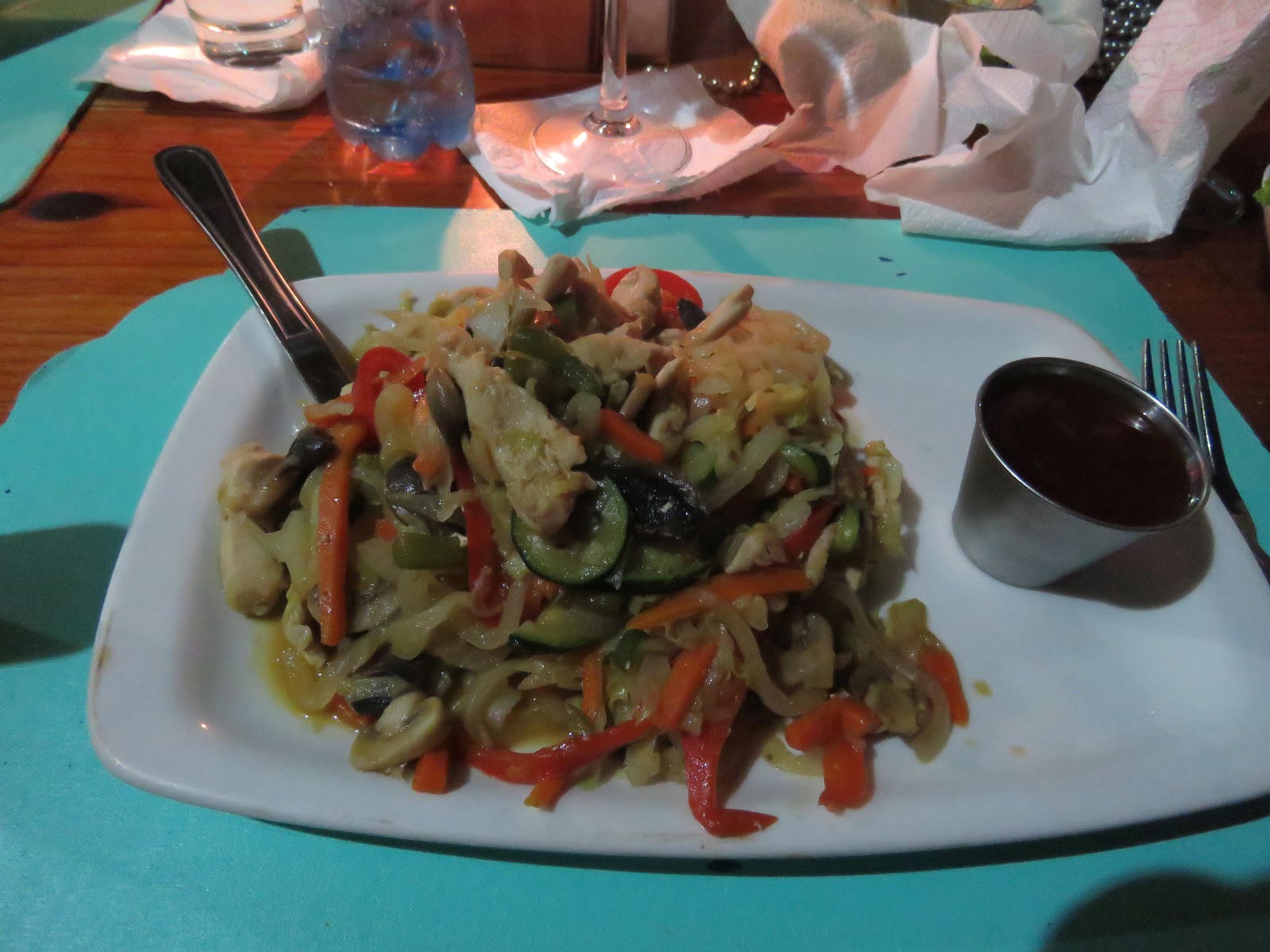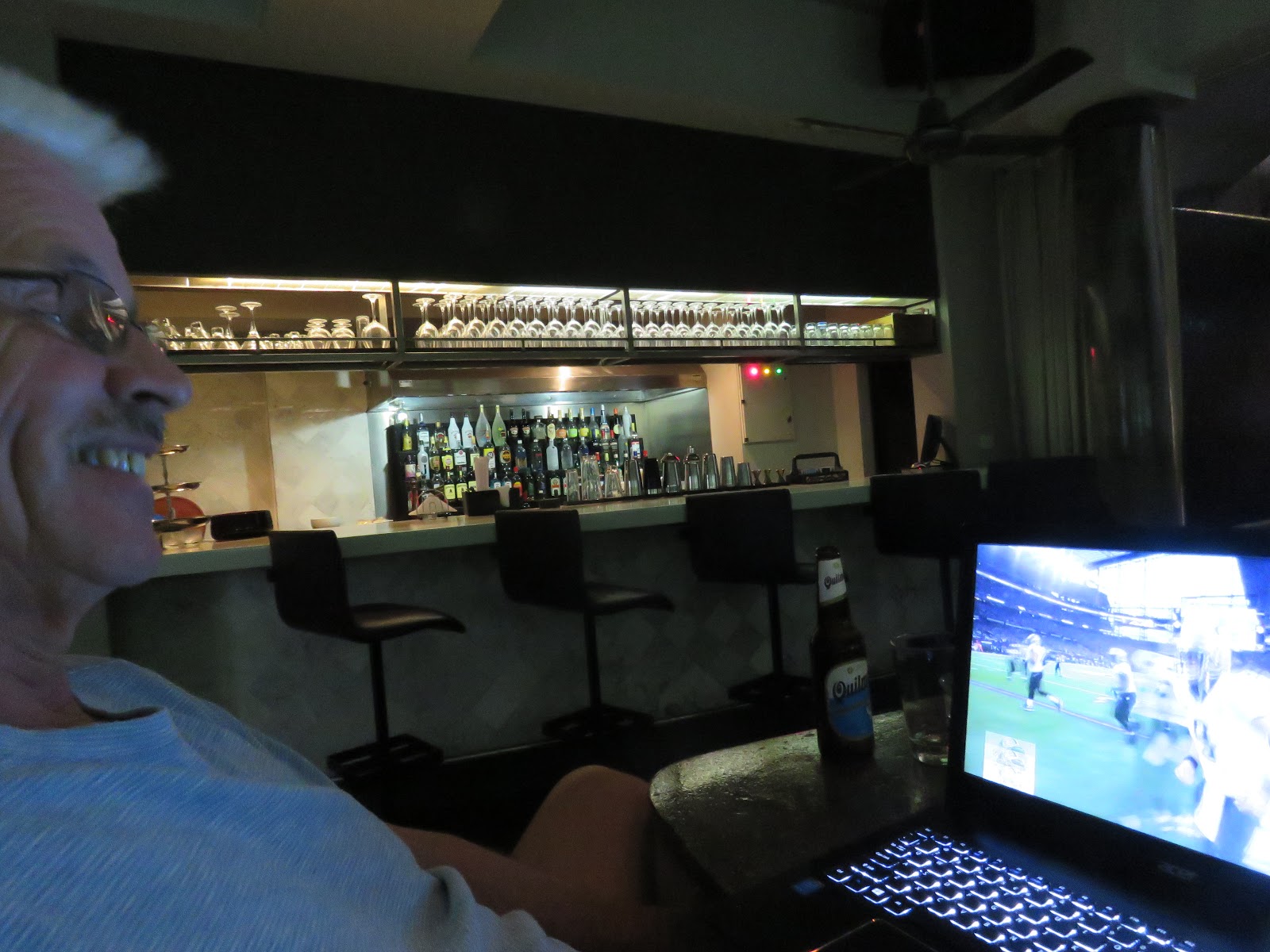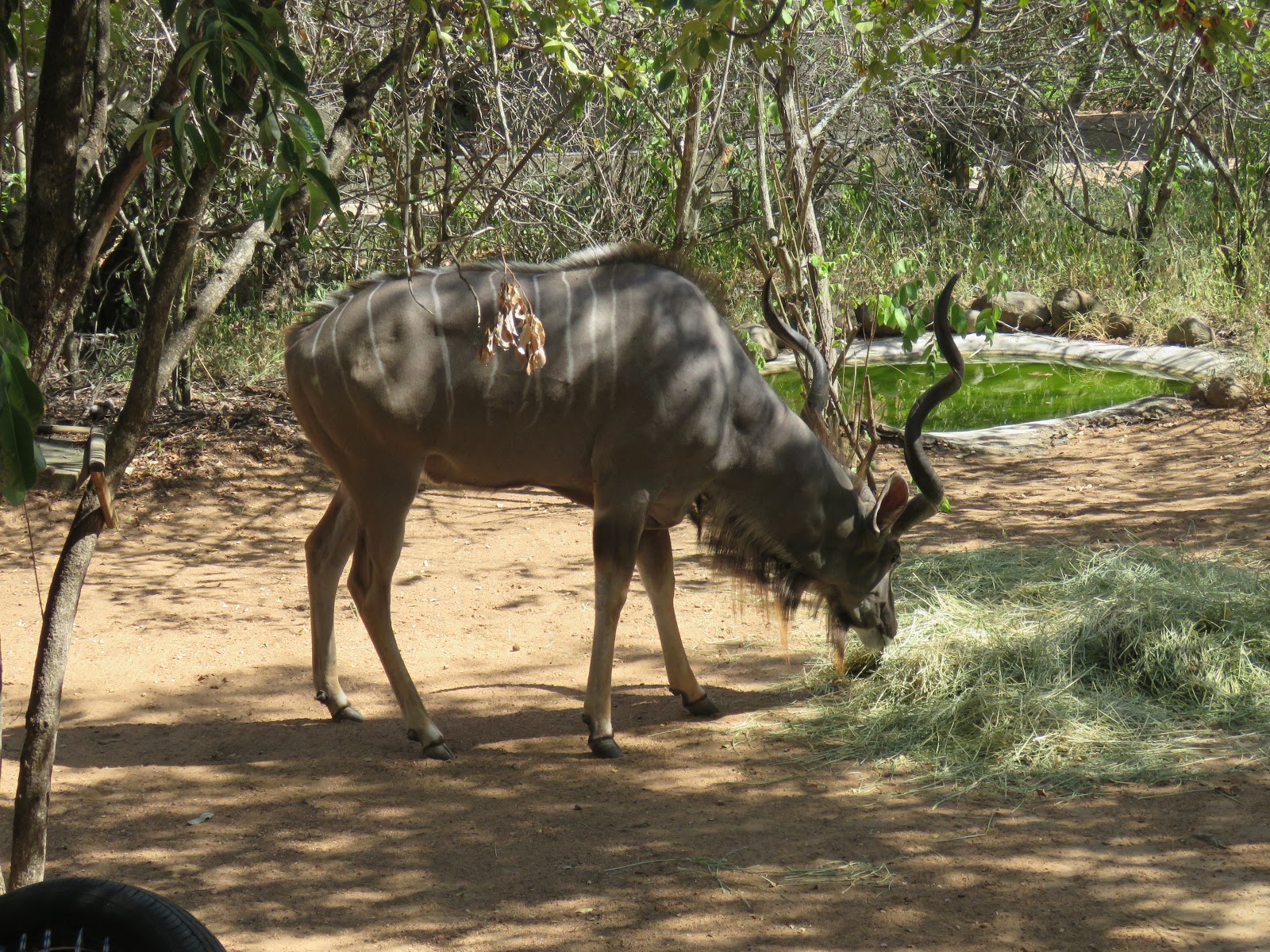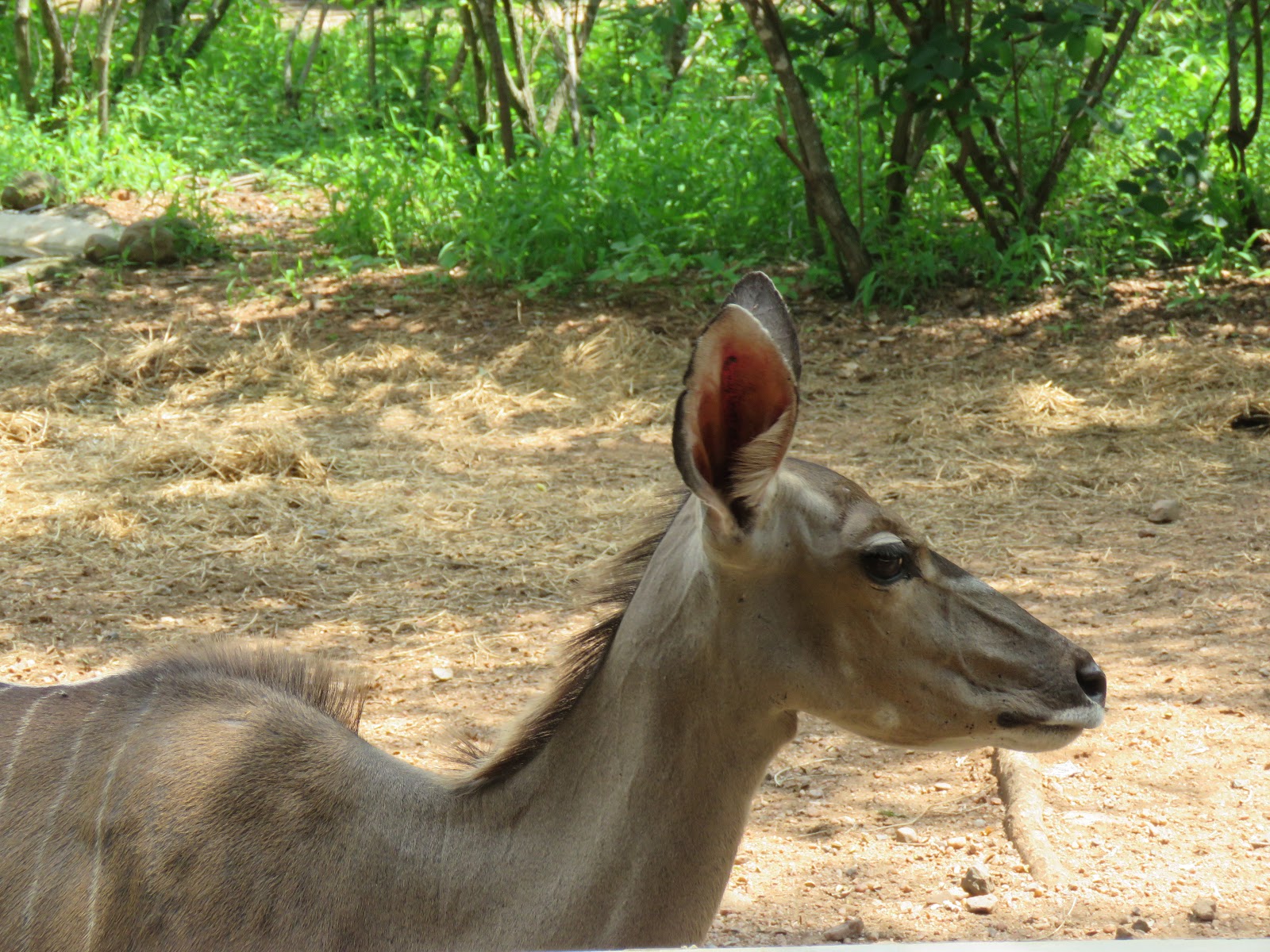 |
| Today, there has been an invasion of baboons and Vervet monkeys around our property. |
“Sighting of the Day in the Bush”
 |
| Young male bushbuck in the garden. |
Today reminded me of our old lives when we entertained, making a wide array of main and side dishes and, of course, some delicious dessert. The place settings, the linen placemats, and linen napkins folded into a configuration I learned almost 50 years ago when I worked as a server in a supper club in Minnesota for a short time.
No doubt, I always make more food than we’ll need, fearing that there’s enough for everyone. Plus, Tom and I both love eating leftovers. The convenience of not having to cook for a few more days, along with the opportunity to savor the special foods, once again makes leftovers incredibly pleasurable for us.
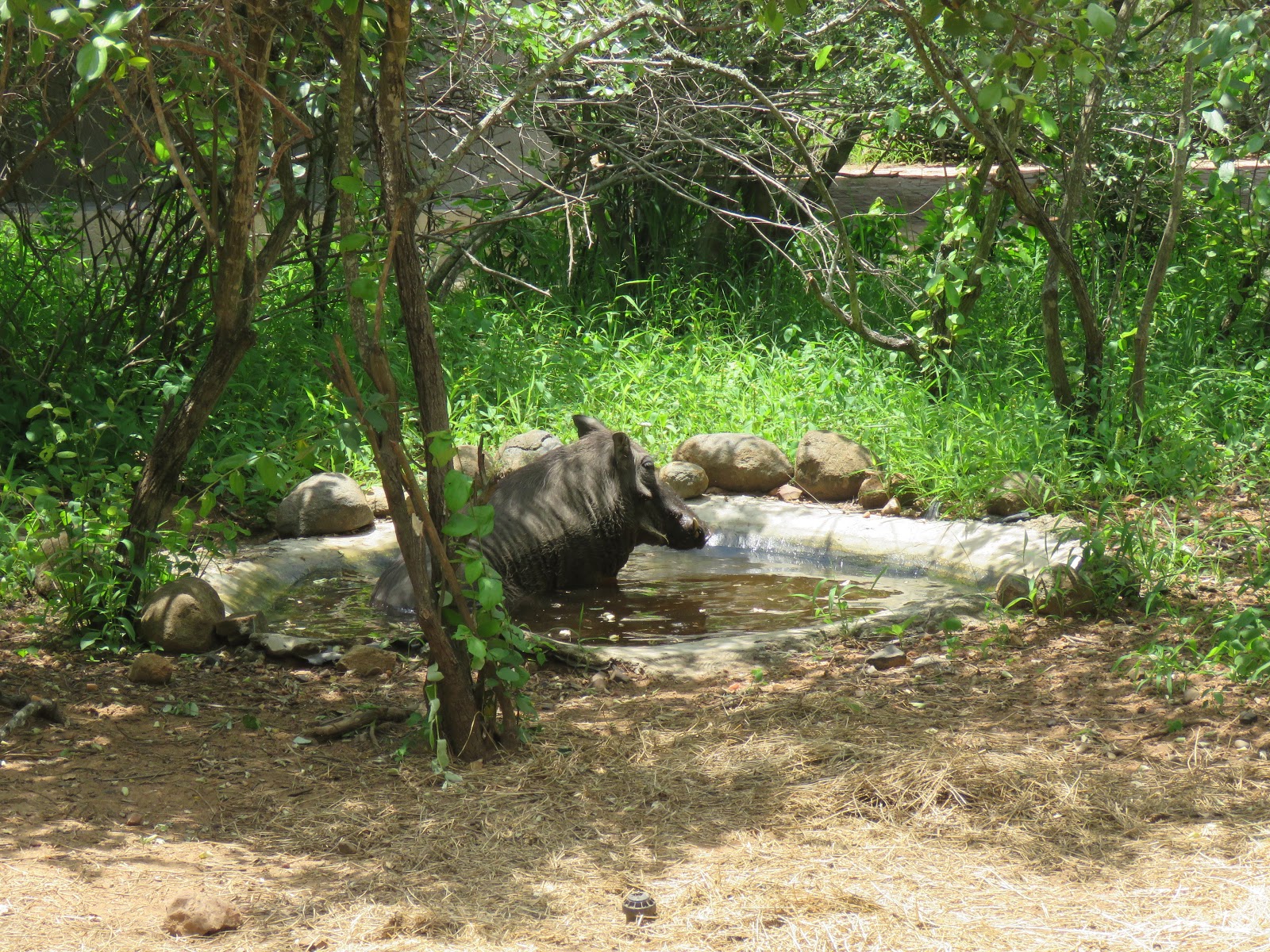 |
| Little, while he was lounging in the water in the cement pond. |
With Linda and Ken here, we’ll feast tomorrow night again and freeze whatever is left. Based on the foods we have accumulated in the chest freezer, we may not have to shop for food again, other than fresh produce, for the remainder of our time in Marloth Park, at this point in 29 days. It’s hard for us to believe the time is passing so quickly.
Tonight’s menu for Rita’s birthday consists of the following items:
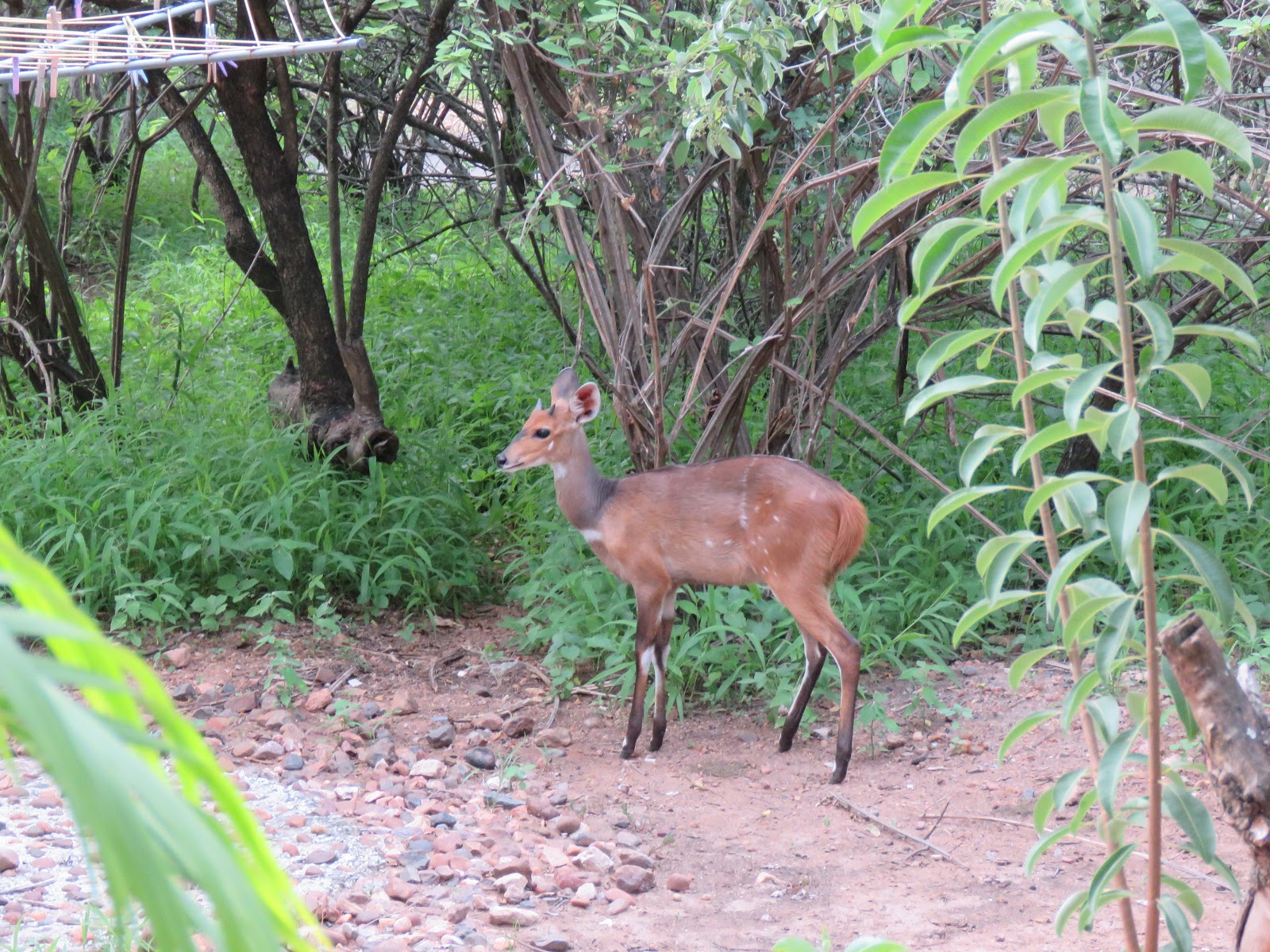 |
| This young male bushbuck stops by several times a day along with other bushbucks. |
But even with this seemingly small amount left to do, it will result in a busy day when putting it all together. Thus, based on this, unfortunately, I have to cut today’s post short to get back to work on this lofty menu.
 |
| Little, leaving the cement pond after a soak on a hot, humid day. |
Tonight’s party should be fun as well. Let’s hope the power stays on!
Happy day to all.
Photo from one year ago today, January 16, 2018:
 |
| This scene in La Recoleta Cemetery in Buenos Aires, where Evita Peron is entombed, particularly caught our eye. For those photos, please click here. |



